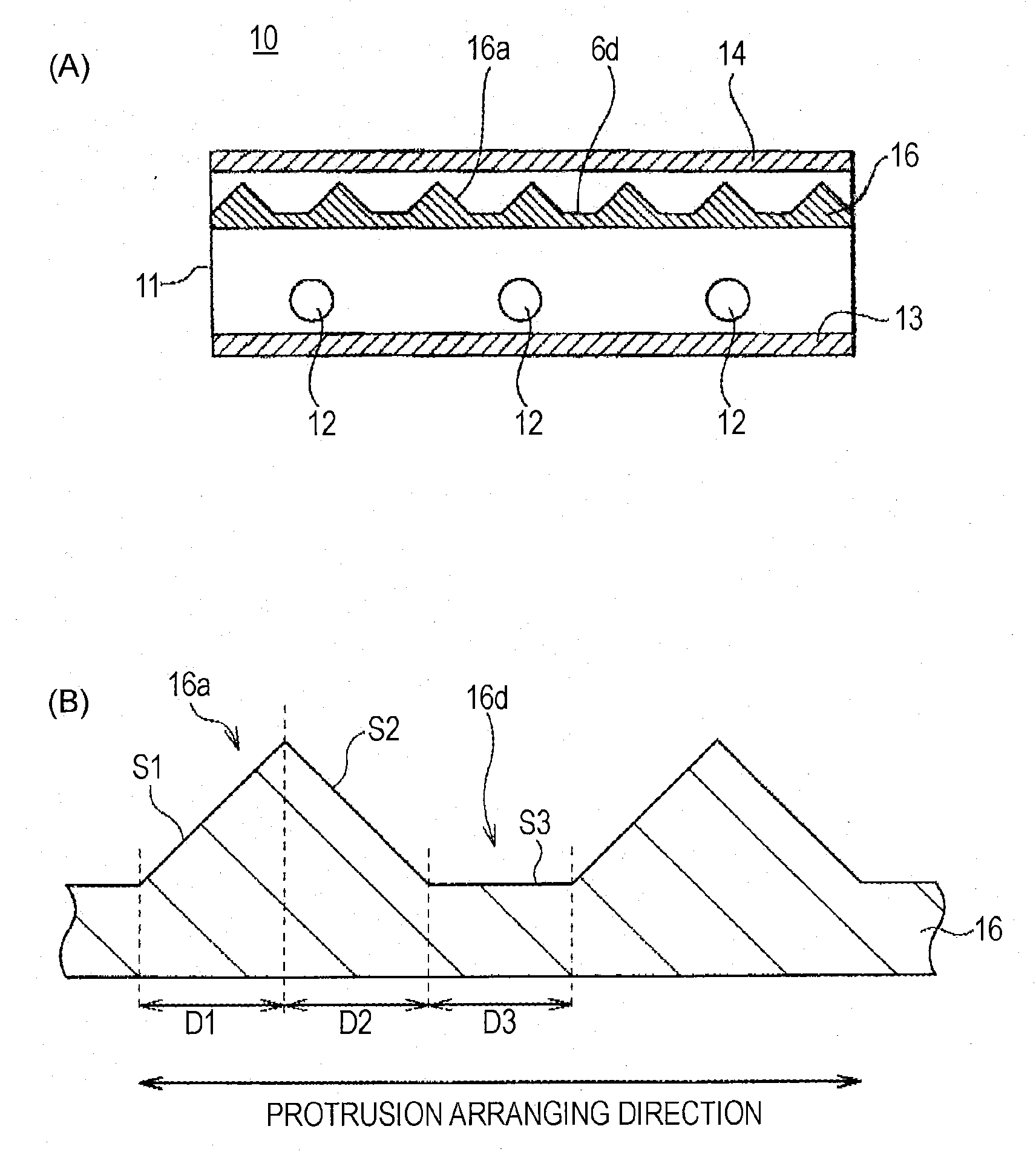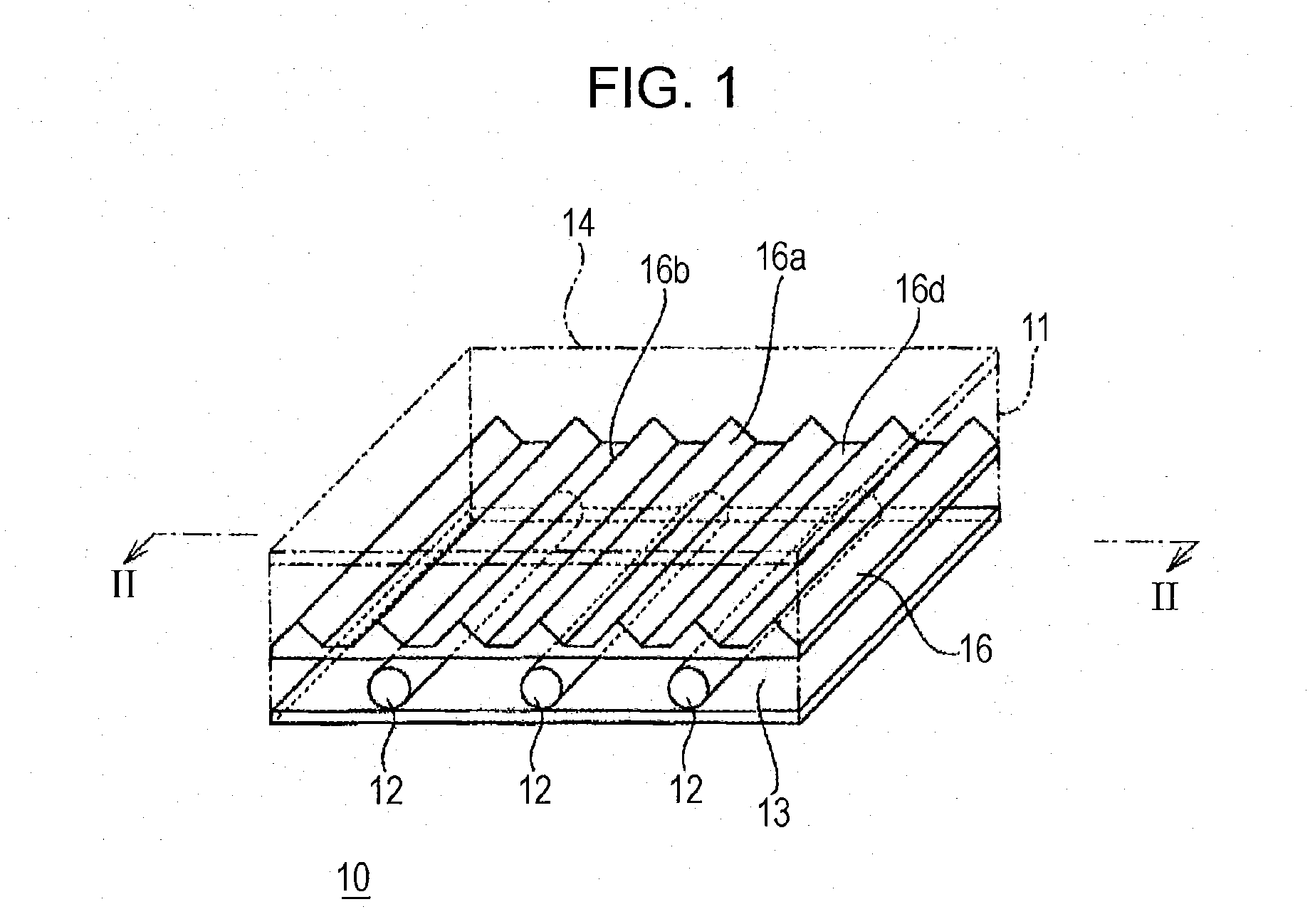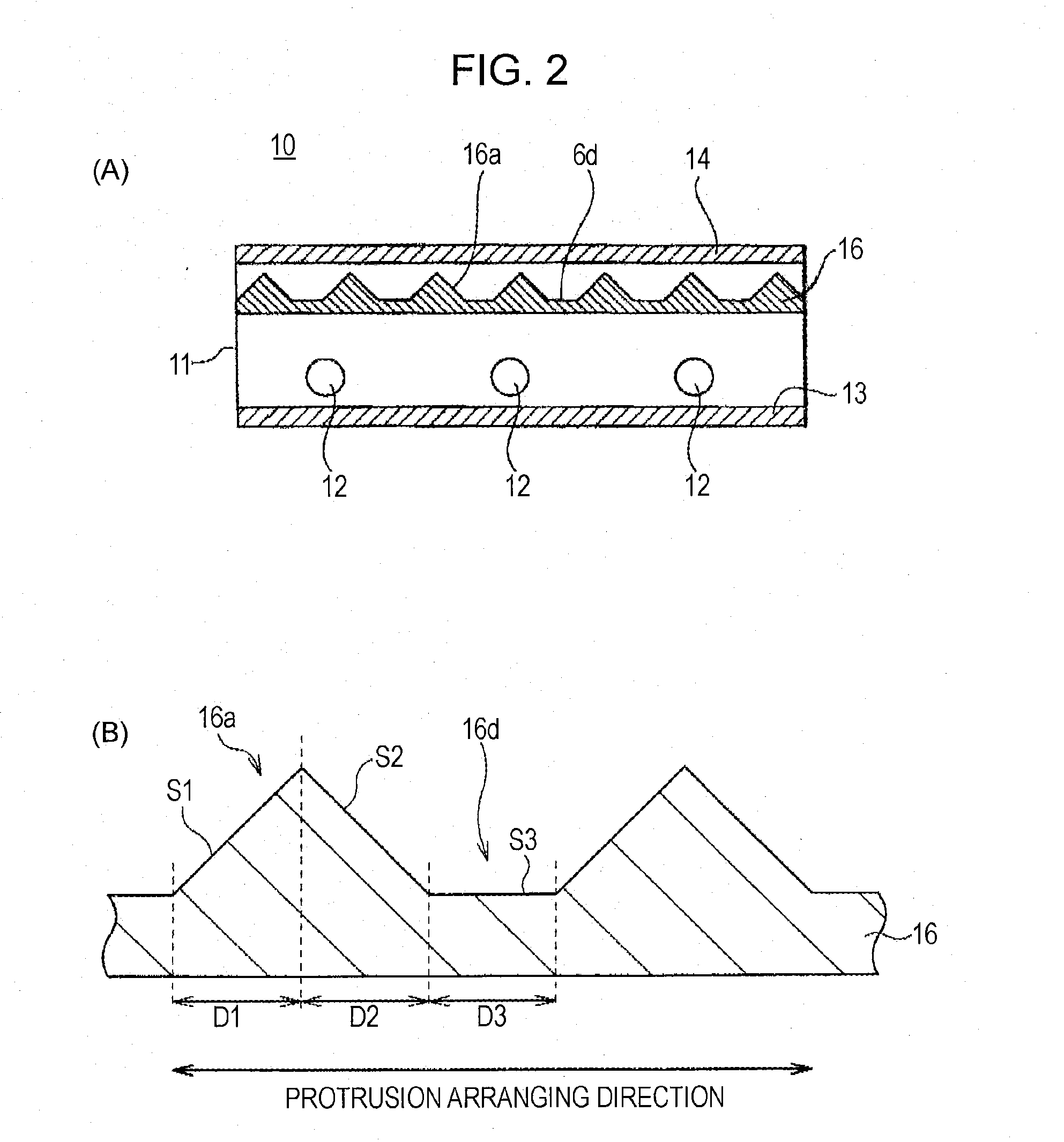Surface Emitting Device and Liquid Crystal Display
a surface emitting device and liquid crystal display technology, applied in lighting device details, lighting and heating apparatuses, instruments, etc., can solve the problems of large size, lack of luminance of edge-lighting backlight units, etc., to improve luminance uniformity and increase the number of light-source images
- Summary
- Abstract
- Description
- Claims
- Application Information
AI Technical Summary
Benefits of technology
Problems solved by technology
Method used
Image
Examples
first embodiment
[0039]FIG. 1 is a schematic perspective view of a surface emitting device 10 according to a first embodiment of the invention; FIG. 2(A) is a cross-sectional view of the surface emitting device 10 taken along line II-II of FIG. 1; and FIG. 2(B) is a cross-sectional view of a prism sheet 16. The surface emitting device 10 is a direct-lighting type backlight unit for a liquid crystal display, for example.
[0040]The surface emitting device 10 of this embodiment includes line light sources 12, a reflector 13, a diffusing sheet 14 composed of a diffuser or a diffusion sheet, a prism sheet 16 serving as a light-source-image division sheet, and a casing 11 for housing them. The reflector 13 and the diffusing sheet 14 are disposed in opposed positions, between which a plurality of line light sources 12 is disposed in parallel at regular pitches.
[0041]The line light source 12 may be a known light source, e.g., a fluorescent tube such as a cold-cathode tube or a hot-cathode tube. The reflector...
second embodiment
[0063]FIG. 8 is a schematic perspective view of a surface emitting device 20 according to a second embodiment of the invention. The components of FIG. 8 corresponding to those of the first embodiment will be given the same numerals and their detailed description will be omitted.
[0064]The surface emitting device 20 of this embodiment includes point light sources 22, a reflector 13, a diffusing sheet 14 composed of a diffuser or a diffusion sheet, a prism sheet 16 serving as a light-source-image division sheet, and a casing 11 for housing them. The reflector 13 and the diffusing sheet 14 are disposed in opposed positions, between which a plurality of linearly arranged point light sources 22 are disposed in lines.
[0065]The prism sheet 16 has the same structure as the first embodiment, in which the edge lines 16b of the prism-shaped linear protrusions 16a are in parallel to the direction of the arrangement of the point light sources 22. Alternatively, the edge lines of the prism sheet 1...
example 1
[0069]The uniformity of luminance of the surface emitting device according to the first embodiment was tested under the following conditions. The results are shown in FIG. 9.[0070]Diffusing sheet 14: diffusion sheet D114 (manufactured by Tsujiden KK)[0071]Line light source 12 and Reflector 13: liquid crystal TV KDL-S19A10 (manufactured by Sony Corporation)[0072]Prism sheet 16: flat portion 16d: 15 μm in width[0073]linear protrusion 16a: prism with a base of 50 μm and a vertical angle of 90°[0074]Distance from line light source 12 to prism sheet 16: 7 mm[0075]Luminance meter: RISA-COLOR (manufactured by Highland)
[0076]The prism sheet 26 was manufactured in the following way:
[0077]A metal plate for hot pressing was used as an original plate in which an isosceles right-angled triangle in cross section with a vertical angle of 90°, a base of 50 μm, and a height of 25 μm and a flat portion with a width of 15 μm are continuously and alternately engraved. Thermoplastic resin, a polycarbona...
PUM
| Property | Measurement | Unit |
|---|---|---|
| fixed angle | aaaaa | aaaaa |
| base angle | aaaaa | aaaaa |
| base angle | aaaaa | aaaaa |
Abstract
Description
Claims
Application Information
 Login to View More
Login to View More - R&D
- Intellectual Property
- Life Sciences
- Materials
- Tech Scout
- Unparalleled Data Quality
- Higher Quality Content
- 60% Fewer Hallucinations
Browse by: Latest US Patents, China's latest patents, Technical Efficacy Thesaurus, Application Domain, Technology Topic, Popular Technical Reports.
© 2025 PatSnap. All rights reserved.Legal|Privacy policy|Modern Slavery Act Transparency Statement|Sitemap|About US| Contact US: help@patsnap.com



